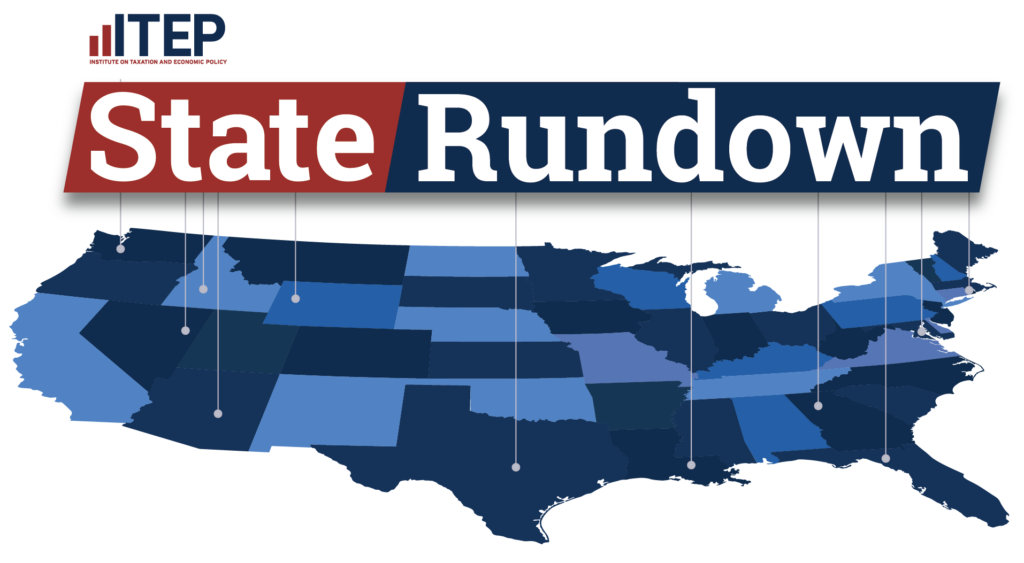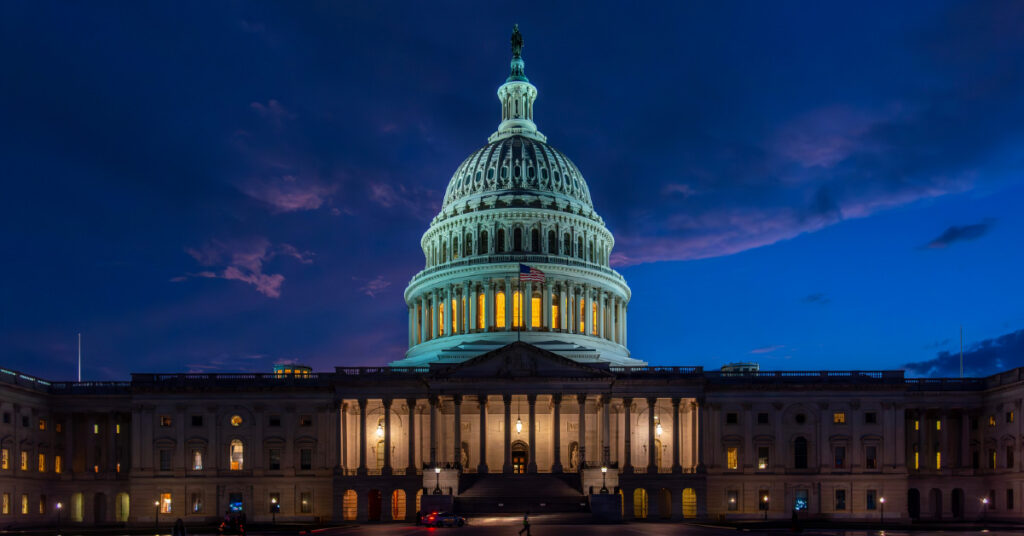An updated version of this brief was published on February 9, 2017.
Every state levies taxes on gasoline and diesel fuel, usually just called “gas taxes.” These taxes are an important source of state revenue—particularly for transportation—but their poor design has resulted in sluggish revenue growth that fails to keep pace with state infrastructure needs. This ITEP Policy Brief explains how state gas taxes work, their importance as a transportation revenue source, the problems confronting gas taxes, and the types of gas tax reforms that are needed to overcome these problems.
How Gas Taxes Work
Most states levy a fixed-rate gas tax that collects a specific number of cents in tax on every gallon of gas purchased. In Texas, for example, drivers have been paying exactly twenty cents per gallon in state gas taxes for over two decades. Thirty-two states have gas taxes designed entirely around this type of fixed-rate structure. Among the other eighteen states, fifteen tax gasoline based on its price—much like the traditional sales taxes that most states levy on things like furniture, toothpaste, and televisions. Since gas prices tend to grow over time, the tax paid on a gallon of gas grows as well. These types of gas taxes are therefore called variable-rate taxes. Two states, Florida, and Massachusetts, levy a slightly different type of variable-rate gas tax—one that grows alongside a broader measure of inflation in the economy, rather than alongside the price of gas. Maryland’s gas tax is a hybrid of these two approaches.
A Vital Transportation Revenue Source
State gas taxes are the single most important source of transportation revenue under the control of state lawmakers. Roughly 30 percent of state own-source highway funding comes from state gas taxes. Many states use gas tax revenues for mass transit projects as well, under the sensible assumption that highway users benefit from the congestion-reducing effects of transit. But while gas taxes remain a vital transportation revenue source today, their relative contribution to state transportation budgets is actually declining. Taxes and fees paid by drivers (the most significant of which is the gas tax) now make up a smaller share of total highway funding than at any point since the Interstate Highway System was created in 1957. But this shift in transportation finance did not come about because of a conscious change in policy. Instead, it is due to flaws in the design of the gas tax that have left it incapable of handling the challenges outlined below.
Challenges Confronting State Gas Taxes
State gas taxes, as currently designed, are an unsustainable revenue source. This means that over time, the revenue generated by state gas taxes tends to fall increasingly short of meeting state infrastructure needs. The most unsustainable type of gas tax is the fixed-rate tax, where the tax rate remains unchanged year after year. But even variable-rate gas taxes are sometimes unable to generate an adequate amount of revenue over time. The reason behind the unsustainability in state gas taxes is twofold.
First, vehicle fuel efficiency has been on the rise since 2004. While improving fuel efficiency is no doubt a positive development overall, it also creates an undeniable problem for the gas tax. As efficiency has improved, drivers are now able to travel further distances on each tank of gas before they have to stop, refuel, and pay anything in gas taxes. Those extra miles being squeezed out of each tank of gas are essentially tax-free, relative to what drivers had been paying previously.
The second challenge confronting state gas taxes is the rising cost of building and maintaining the nation’s transportation infrastructure. While fuel efficiency improvements directly reduce the amount of revenue raised by gas taxes, the rising cost of construction puts additional strain on whatever revenue is being raised. Since 1990, transportation construction costs have risen by 63 percent, meaning that a construction project that previously cost $50,000 would now cost over $80,000 to complete. But while the costs of asphalt, concrete, and machinery grow almost constantly, most state gas taxes are rarely increased.
Twenty-four states have gone more than a decade without raising their gas tax rate, and sixteen states have gone two decades or more without an increase. Lawmakers worried about the political ramifications of “raising taxes” are kicking the proverbial can down the crumbling road, even if the so-called “tax increase” under consideration is simply an attempt to address the inevitable shortfall created by rising costs and improving fuel efficiency.
Consequences of Inaction
When viewed as a percentage of families’ household budgets, state gas taxes are lower than at any point since the widespread adoption of those taxes at the end of the 1920’s. Focusing on the more recent past, ITEP found that state gas tax rates, adjusted for construction cost inflation, are a full 17 percent lower today than they were in 1990. That’s the equivalent of a 5-cent gas tax cut on every gallon purchased—though in some states the decline has been significantly larger.
The decline of the gas tax is costing states significant revenue. If every state had reformed its gas tax to grow alongside construction costs the last time lawmakers raised the tax, the states as a whole would be bringing in more than $10 billion in additional gas tax revenue every year. Some states, such as New Jersey and Tennessee, would each be bringing in more than $500 million in additional annual revenue.
These revenue losses have been a major factor in the worsening condition of the nation’s infrastructure. According to the American Society of Civil Engineers (ASCE), a quarter of America’s bridges are structurally deficient or obsolete, one-third of the nation’s major roads are in poor or mediocre condition, almost half of all major urban highways are congested, and nearly half of all Americans lack access to bus or rail transit. As a result of these deficiencies, the ASCE estimates that Americans waste the monetary equivalent of $32 billion in travel time delays each year, and another $97 billion on vehicle operating costs. Given all these problems, it should come as little surprise that even business leaders—a group hardly enamored with taxes—often come down on the side of raising state gas taxes in order to fund a more efficient transportation system.
When gas taxes are allowed to stagnate, the consequences are not always limited to state transportation systems. Recently, a number of states have enacted long-term raids on their general funds, where a certain percentage of tax revenue usually reserved for education, human services, and other public priorities is siphoned off to make up for lagging gas tax revenues. Some lawmakers have pointed out the problems with this approach, but far too many view a general fund Band-Aid as an easy way to delay politically difficult, but long-overdue reforms to the gas tax.
Recommendations for Reform
Despite the dismal condition of so many state gas taxes, there are a few straightforward reforms that states can use to fix these broken, but vital, revenue sources:
• Rising fuel efficiency and construction costs have significantly reduced the purchasing power of state gas taxes. The first and most obvious step that states should take to offset these declines is to increase their gas tax rates.
• An increase in state gas taxes, however necessary, will be of little help in the long-term unless steps are taken to ensure that the tax can withstand future increases in fuel efficiency and construction costs. Restructuring state gas tax rates so that they grow over time can help alleviate this problem. Restructuring can come in a variety of forms, including linking state gas tax rates to construction cost inflation, the general inflation rate, or gas prices.
• Like most taxes on consumption, state gas taxes are inevitably regressive—impacting low-income families far more heavily than any other group. The impact of gas taxes on families struggling to make ends meet is often cited in opposition to state gas taxes, but lawmakers can provide meaningful relief to these families via targeted low-income tax credits, without having to starve states’ transportation revenue streams.
Recent Progress
These recommendations are thoroughly tested and growing in popularity. Lawmakers in seven states with diverse political climates have increased and/or reformed their gas taxes since February 2013 (those states are Maryland, Massachusetts, New Hampshire, Pennsylvania, Vermont, Virginia, and Wyoming). As a result of these reforms, a majority of the country’s population now lives in a state with a variable-rate gas tax that can gradually grow alongside inflation or gas prices. More states are poised to consider adopting this approach in the years ahead.
Additional ITEP resources on this topic include:
• Building a Better Gas Tax (December 2011)
• How Long Has it Been Since Your State Raised Its Gas Tax? (April 2014)
• Most Americans Live in States with Variable-Rate Gas Taxes (April 2014)
• Don’t Blame the Gas Tax for High Gas Prices (May 2013)




